#mead
Text
Small businesses are awesome.
This guy, a veteran and park ranger named Steve, opened this place called TreeRock in Asheville, NC as a sort of passion project, to celebrate Mead and Cider, and showcase an incredible selection of the world's first alcoholic beverage.
I just had an hour and a half long conversation with the guy. He's so personable and knowledgeable, and I had an absolute blast- I tried like 10 different drinks, and they were all awesome, and he told me about the history and making of each and every one. After a while, I decided this is my new favorite place to go.
But they're closing, in March.
These past few years have been devastating for small businesses, and they are no exception. They are going to close in March, unless something drastic happens that changes things.
So if you're in Asheville, or you know somebody in Asheville, or you have been meaning to go to Asheville to bury that body in the trunk of your car somewhere along the Appalachian trail but you just haven't gotten around to it yet, please stop by TreeRock for a flight of meads, ciders, and beers from all around the world, for less than the cost of a Chipotle burrito.
(also they love dogs!!! my dog had a great time, and I'm sure yours will too!)

#cider#mead#Asheville#north Carolina#southern#usa#beer#bar#small business#tw drinking#drinking#alcohol#tw alcohol#Appalachia#Appalachian#local#local business#i am not being paid for this#in fact i just spent like $70 there#I'm just really passionate about small businesses being supported
6K notes
·
View notes
Text

"Barmaid Wench"
Concept art for The Elder Scrolls V: Skyrim
Art by Ray Lederer
#ray lederer#the elder scrolls#art#concept art#tes#skyrim#nord#barmaid#tavern#ale#mead#wine#sketch#color sketch
308 notes
·
View notes
Text
it's that time again

here's how to make alcohol at home
recipe under the cut. it's long. I warned you.
FOREWARD:
I do not endorse regular substance abuse or at-home distillation without proper training. Don’t hit your kids. Don’t blow up your house. It’s okay to eat shit and die, like, once every three months, not every two weeks, not every weekend. If you’re doing that, there’s not much I can do to help or give in way of advice. But this recipe is not for you. And you should reconsider some stuff if you haven’t already.
That being said.
The following is my personal method for brewing beer, mead, wine, etc. I have utilized this method many times and it has worked wonderfully. I have achieved up to 15% proof. This means that the substance you create should be perfectly drinkable and safe if you follow the instructions and use your head. HOWEVER. You should be prepared to read this whole document before making anything. There are warnings and safety precautions you need to take, and I don’t want anyone to get botulism of some shit because of a shoddy recipe that doesn’t explain absolutely everything.
I also do not encourage the practice of distillation at home. This is not because it is illegal. For those unaware, distillation is the semi-complicated process of heating alcohol to produce hard liquors. While it may sound fun to make Smirnoff from home, there is a reason we do not. Alcohol is extremely flammable. You will set yourself or your valuables on fire.
Ingredients:
1 Packet ActiveDry Yeast
1 Cup Sugar or 1 Cup Sugar Equivalent*
⅔ Gallon Water
Supplies:
1 Gallon Container
1 Suitable Cork or Lid**
3-4 Ballons, Latex Gloves, or even condoms will do honestly***
IMPORTANT:
You must have a space prepared ahead of time to store the JFCB while it brews. Remember. It will stink like hell. Anyone who smells it will know it’s alcohol. Use your noggin okay
NOTES:
*
In simple terms, alcohol is created when yeast eats sugar. You can use pretty much anything sugary. Don’t use chocolate unless you want to die.
I like to use those strawberry-flavored grandma hard candies. The stuff they make is super fucking strong and tastes like god himself descended from the heavens to kick your ass. It makes what I like to call the JFCB. It’s high-proof enough to burn your throat. So, you know, try to moderate.
**
You need something to seal the container with once you’re done. Pick wisely.
***
It’s gotta be something that can form a seal around the lip of the container, but also expand like a balloon. These are some of the things I’ve found work best.
INSTRUCTIONS:
Creating the Base
Take your 1-Gallon Container and fill it with half the packet of ActiveDry yeast. You don’t need all of it. Trust me on this one.
Pour in your 1 Cup Sugar or Equivalent.
Pour in the ⅔ Gallon of Water.
Either whisk or mix vigorously. When it starts foaming, you’re done.
Stage 1
Put the Balloon/Latex/Condom over the lip of the container. Make sure it’s secure and extremely tight, but there’s plenty of room for air to fill.
Find your designated Place to Put It. This should be somewhere nobody’s gonna smell it, and also somewhere nobody’s gonna go for the next three odd months.
Set your shit down.
Wait 2-3 weeks.
Stage 2
After 2-3 weeks, the alcohol should stop emitting gas. At this point, it’s safe to cork. Don’t do it beforehand or the container will explode.
I like to put some hot glue or wax over the lip just to make sure it’s sealed extra well. I sometimes put tinfoil too. It doesn’t actually help anything, just looks fancy.
Find somewhere nice to store it. Make sure it’s right side up. Odds are you sealed it pretty poorly if it’s your first time, and you’re gonna be in deep shit if it starts to smell.
If it does, that means you corked it too early. Move it back to your Place to Put It for like a month. Recork it after that time’s up. It might be difficult, but you’re smart. You can do it. It should be good to go after that.
And there you have it. A nice bottle of…. Something?
Enjoy. Or just leave it to sit.
FAQ:
Q: I’m worried about getting botulism from this shit. Is it really safe?
A: Usually, people don’t get botulism. My rule of thumb is that if it smells like shit you should really just throw it away. If you’re really worried, I’d also recommend throwing it away. The paranoia’s not worth it.
Q: I’m a minor. Should I try this at home?
A: Probably not. I’m a minor too, so fuck’s to say what my opinion’s worth.
Q: I want to try vodka/scotch/whiskey. What should I do?
A: You should just not. Or buy it at the store. I don’t know man i’m not the all-seeing eye
Q: I’ve heard you need an airlock for this. Do you need an airlock for this?
A: Absolutely fucking not. They are feeding you airlock propaganda. You don’t need an airlock.
#eddsworld fanart#eddsworld#eddswolrd#tom ew#tom eddsworld#shitpost#alcohol#beer#red wine#wine#mead#recipe#recipes#cooking#breaking bad#how to#these fucking tags man#mega shitpost#life#life quotes#motivation#motivating quotes#fanart#crime
167 notes
·
View notes
Photo

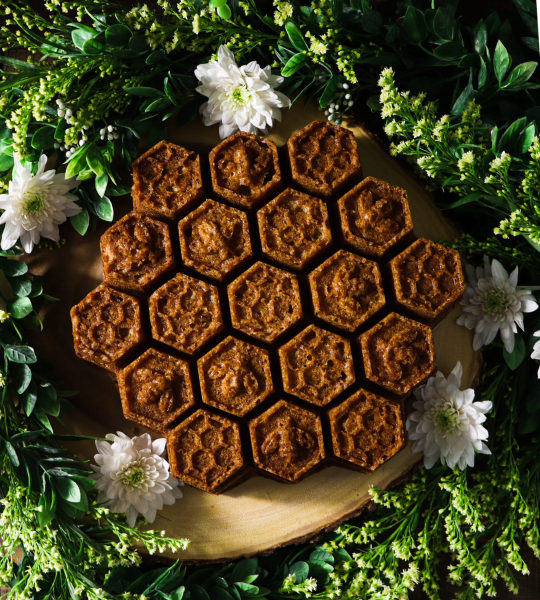

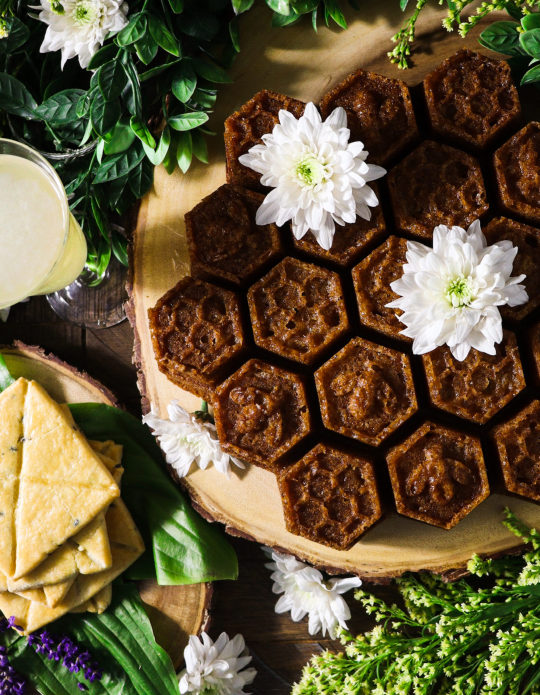
DIY Spiced Mead Honey Cake
Cakes are an important part of a hobbit’s afternoon tea menu – this honey cake spiked with sweet mead and spices is fashioned after the famous honey cakes of the Beornings!
✖✖✖✖✖✖✖✖
sew-much-to-do: a visual collection of sewing tutorials/patterns, knitting, diy, crafts, recipes, etc.
#DIY#recipe#dessert#sweet#treat#spice#spiced#mead#honey#cake#bake#baking#hobbit#lotr#lord of the rings#the hobbit#afternoon tea#tea
894 notes
·
View notes
Photo

Peach Mead Recipe with Summer Roses and Elderflowers
#recipes#summer recipes#spring recipes#drinks#mead#fermentation#peaches#roses#elderflowers#foraged recipes#edible flowers
401 notes
·
View notes
Text
#golden hive mead#mead#dragonfruit#honey#yeast#tw alcohol#tw liquor#fermented fruit#drinks#tiktok#tiktok food#brattylikestoeat#food#foodlr#food blog#video#foodie#cooking stim#stim cooking#yummy
205 notes
·
View notes
Text

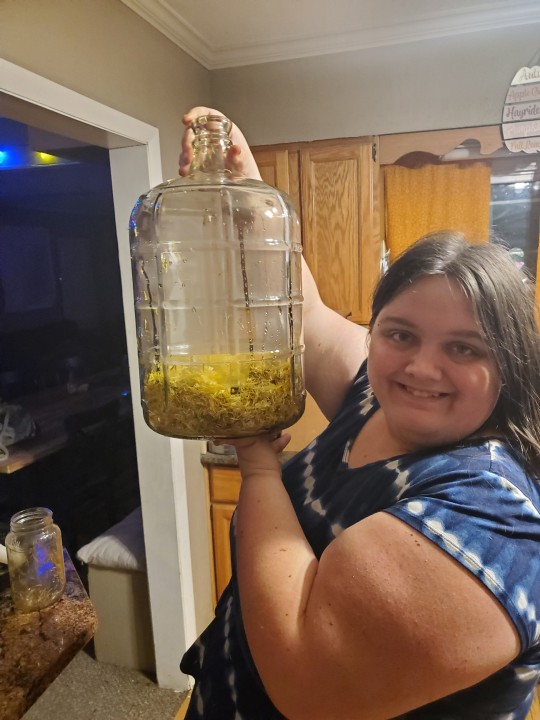


Making dandelion mead with my Gf. She's trying to win a local contest for brewing. Since we had plently of dandelions in the yard, it was an obvious pick. You can use any dandelions in this as long as they're still yellow and they havent been sprayed with pestacides. Other ingedants are black tea, honey (2lbs per gallon), Lemon juice, and champagne yeast. Really easy to do, the secret is to seperate the yellows from the greens when gathering dandelions though.
69 notes
·
View notes
Text
Got nothing better to do today so I'm prepping to make some mead! The goal was to go as far as I could with the cheapest, simplest materials and buy as little of the professional stuff as possible to start with. I did make some concessions, but still planning not to buy something until the step where I need it.
Bought at step 1:
Hydrometer. This was the biggest concession, but the one that I saw the most warnings about not having. If I don't measure sugar content at the start, I won't ever be able to know the final ABV or tell when it's done fermenting. $8 for this, which I won't have to buy again.
Yeast nutrient. Another concession, but necessary to make sure fermentation happens right. Also comes in a package I can use for a lot of batches, for $6 total.
1 gallon of spring water. I didn't have any gallon jugs already and I'm not about to drop unnecessary money on glass carboy jars. Also takes away the chance of chlorine in the tap water killing the yeast. $1.30 for a gallon.
Yeast - Fleischmann's Fast Acting. There are specific wine and champagne yeasts but this brand is usually listed right alongside them on a lot of sites. Maybe in the future I'll try some of the suggested fancy brewing yeasts. For now a three-pack of Fleischmann's is $1.20.
Balloons. Airlocks are necessary to allow gas to escape while also preventing contaminants from entering the brew. I could get 3 airlocks for about $10, but that'll be something I save for a later batch when I don't have to buy another hydrometer. For now a balloon with a couple pinholes in it will do the job. A pack of 25 balloons was $1.
Honey. This, of course, is the most necessary part but also the most expensive single item. Most recipes I see call for 2-3 pounds of honey. I picked up 2.5 pounds for $15.
Total cost at time point 1: About $33 to start my first gallon brewing. Everything except the honey and the water will make multiple batches.

There are more things I foresee needing to buy for this first batch, like a siphon, chemicals to stop fermentation so I can backsweeten or add flavors, and bottles/corks for the eventual finished alcohol. However, that's all at least a month or two (and a paycheck or two) away, and I got nothing but time when it comes to this hobby!
65 notes
·
View notes
Photo

817 notes
·
View notes
Text


I love Skyrim. (Location: Northwatch Keep)

70 notes
·
View notes
Text
So, I semi-recently got into making mead. I took an elective class on brewing and distilling my last semester of undergrad (it was classified as a chemical engineering class, lmao) and I loved it. Distilling is something you can only do with a license, and beer brewing is technically easy, but requires a whole setup I don't have space for. Mead, though, is pretty much just mixing honey and water and letting the yeast go to work (it's also a lot less carbs than beer, which my body appreciates).
The first batch I made was pretty terrible, but it wasn't hard to figure out what I did wrong, and the next try was much better. And since I have chronic gamer disease, once I had the method figured out I obviously had to try some of the Skyrim recipes - after all, if it wasn't for Skyrim, I probably wouldn't even know what mead is. I started with the Honningbrew recipe from the official Elder Scrolls cookbook, and it came out great! I have some ideas on how to improve the next batch (I'd really like more flavor from the apple), but I was proud enough of it to whip up a fun little label in photoshop, so I figured I might as well share it here, too.

Anyway, here's your friendly internet reminder that if you think something looks fun, you can literally just.. go do it. It probably will be fun, even if you're bad at it! No one's stopping you except for you.
58 notes
·
View notes
Text

"Tavern Wench" - artist's title not mine
Concept art for The Elder Scrolls V: Skyrim
Art by Ray Lederer
75 notes
·
View notes
Text
Meadmaking
Hey all, Zoe here - the other half of this blog, and I decided to try my hand at posting - particularly my little mead-making project.
Even though Mac is the medieval drinks expert, I just like mead as a drink and I feel like a potion-brewing witch when I make it. Beer was the more popular drink during the middle ages, as it was cheaper and more widely available, but I think it's nasty and who doesn't want to feel like Early English royalty?
As I dug into mead-making, I fell into a SUPER deep medieval-mead-making rabbit hole.
I'm not a mead expert, and I'd highly recommend Susan Varberg's blog, Medieval Mead & Beer, for a very, very in-depth look at how to make medieval mead. HOWEVER, all that said, I did collect some research and played with it myself. Plus, I made some of my own recipes.
So. Mead.
What is it? Fermented honey water, in its most basic form. Honey-wine, it can be called to those who aren't familiar. There's a lot of other names mead has when it's mixed with other things:
Mead – water, honey and yeast
Sack Mead – mead made with extra honey
Short Mead – low honey and low alcohol yeast to be drunk quickly
Hydromel – watered down mead (in period, another word for mead)
Braggot – (period) ale refermented with honey; (modern) malted mead
Melomel – mead made with fruit
Mulsum – mead made with fruit
Cyser – mead made with apples
Metheglin – mead with spices
Pyment, Clar – mead made with grape juice
Hippocras – spiced wine, sweetened (but not fermented) with honey
Botchet — caramelized honey mead
Really, though, when you see it on the shelf, a pumpkin melomel will be marketed as "Pumpkin Mead," so really only the brewmasters get into the weeds on the names.
I was really curious as to how the ingredients were sourced in the middle ages - nowadays, brewers get really into where they source their ingredients (there's a bazillion different yeasts you can use!), but after doing some research, turns out the medievals were too!
Honey.
The medievals categorized honey in different ways. The best quality honey was called "life honey" and was the honey that dripped freely from the wax when pierced. Grades of honey diminished as the honey became harder to get out of the hive. The dregs of honey (collected by heating the frame in water to blend the honey but not melt the wax) was given to servants and was not preferred.
Honey was also categorized by location - Egyptian honeys were very popular and expensive. Honey from different regions in Spain were considered of different quality - one merchant got particularly fussy when one of his batches was "spoiled" by mixing honey from a better region with that from a worse region.
Finally, honey was categorized by flower type. One monetary requested honey made only from lavender. Since hives were highly mobile frames or skeps, it would have been possible for apiarists to move their hives to lavender fields.
Water.
Water is, well, water. Right? Not quite. Medieval recipes do specify using fine, spring water. The water and honey were often boiled together - likely to kill bacteria. However, the wording on "boille" is not super clear. Mead-masters knew that honey shouldn't be boiled (it kills natural yeast), so whether or not the must (the water/honey mix) was boiled in the modern sense or just warmed is unclear. Perhaps the need for "fine, spring, fresh water."
Yeast.
While modern brewers and vintners have a wide variety of yeasts to choose from, medieval brewmasters didn't have as many options. There were a few different options, however. Baking yeast (like a sourdough starter) was one option, while other recipes call for the leftover lees of wine/mead batches. Hops were also used. Of course, yeast is also naturally occurring, so brewers could fairly reliably rely on the natural yeast to kick-start itself.
I'll dump my own mead pics here and then get into the details of a Middle English mead recipe in part two, I guess. I'll talk a bit about the mead-making process, too.
Mead is made by mixing honey and water into a must. Then, yeast is added. Modern mead-makers also add yeast nutrients and other additions to ensure their batch doesn't get infected.

A newly made bottle of mead. Notice the cloudy colour characteristic of new mead. As the yeast eats the sugars, they'll create a bottom layer of debris and the mead will clear, as seen below.
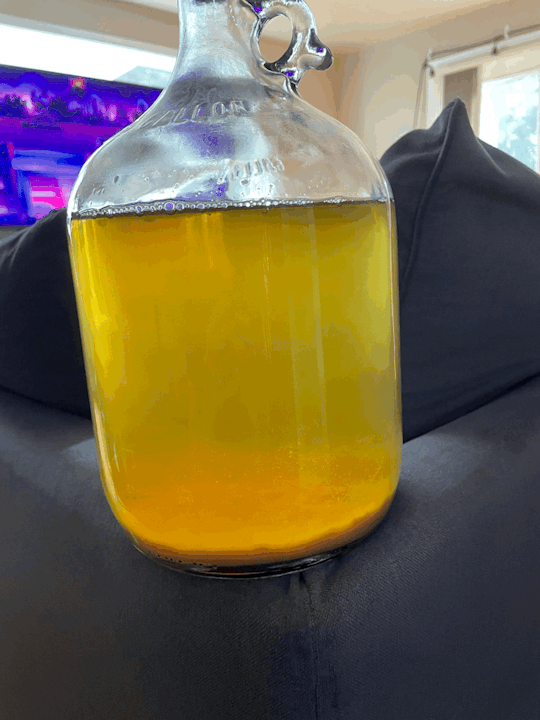
After the primary fermentation has occurred (you can tell when the bubbles of gas, telling you the yeast is eating, have stopped), mead-makers will re-reack their mead. This involves moving it from one jug to the next.

At this point, the mead can be put into a closet and age for a while. The best meads have high clarity - that is, they're clear! The example below is only about 2 months old. It has a way to go, but has good clarity already. Notably, the sagas state that the best, oldest, clearest meads were served to Odin and the gods.

Anyway - that's the basics of mead-making. I'll make a part two about older recipes!
Sources:
Beekeeping in late medieval Europe: A survey of its ecological settings and social impacts. Llu.s SALES I FAVÀ, Alexandra SAPOZNIK y Mark WHELAN
Trade, taste and ecology: honey in late medieval Europe. Alexandra Sapoznik, Lluís Sales i Favà & Mark Whelan
Of Boyling and Seething: A re-evaluation of these common cooking terms in connection with brewing. Susan Verberg.
#bees#beekeeping#mead#mead-making#mediveal#medieval literature#witches#cottagecore#potions#i feel like a witch#maniculum
122 notes
·
View notes
Text
Authentic Irish Foods for Samhain
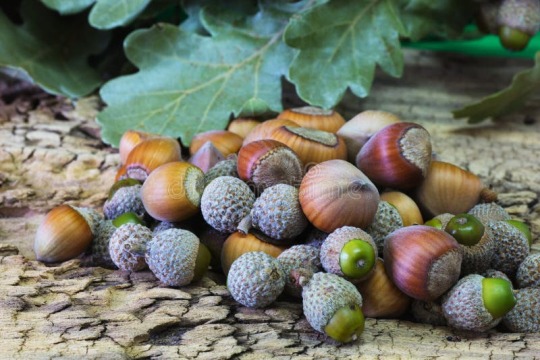




🩸 Blood pudding (living cattle could be bled through the winter to provide the material as well as collecting blood when the cattle were slaughtered to keep the numbers down for winter)
🫓 Brambrack
🍲 Stew
Lamb
Beef
Wild boar
Domestic pig
Deer
Goose
Mallard
Hare
🐗 Salted wild boar and domestic pig (it is possible that other meats were salted for preservation but given that salt was an expensive commodity and no records indicate other meats we simply do not know. I will note here that we also don't seem to have records of smoked meats for preservation during this time)
🍺 Mead and Barely ale
🥣 Porridge
Oat
Barley
🥛 Dairy (this would likely become more limited as the season progressed, but butter has been found in bogs, presumed to be preserved but potentially given as offerings)
Cow's milk
Butter
Curds
mulchán 'hard cheese' (the exact nature of this cheese is unknown but it was described as being extremely hard and could be stored for long periods of time)
🦪 Sea food
Sloke
Clams
Muscles
Crab
Halibut
Sea Salmon
🌿Native Culinary Plants growing in Ireland at this time of year
Skirret
Apples
Purple sprouting boccoli
Wild cabbage
Blackberry
Raspberry
Rowan berries
Elder berries
Sloes
Rosehip
Acorn
Chestnuts
Hazelnuts
Hen of the woods
Pullball
Fairy Ring Champignon
Chanterelle
Porcini
Black Trumpet
Saffron Milk Caps
Cauliflower Mushroom
Wood Blewit
Penny bun
There would be an abundance of foods at this point in the year, but that food would become lesser as the season progressed do to lack of production in the environment and the fact that this point in the year was a time for traveling and feasting (likely to increase bonds amongs the Tuatha and because people would not be as occupied with farming and raiding).
#irish#irish mythology#celtic#irish paganism#irish polytheism#paganism#celtic paganism#celtic polytheism#pagan#food#iron age#samhain#wild boar#deer#porridge#Brambrack#mead#apples#blackberry#elderberry#acorn#chestnut#hazelnut#mushrooms#blood pudding#irish reconstructionist#Irish reconstructionism
121 notes
·
View notes
Text

roomates @motok-wolf
50 notes
·
View notes
